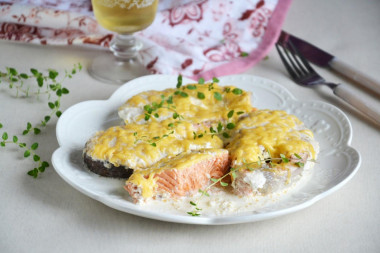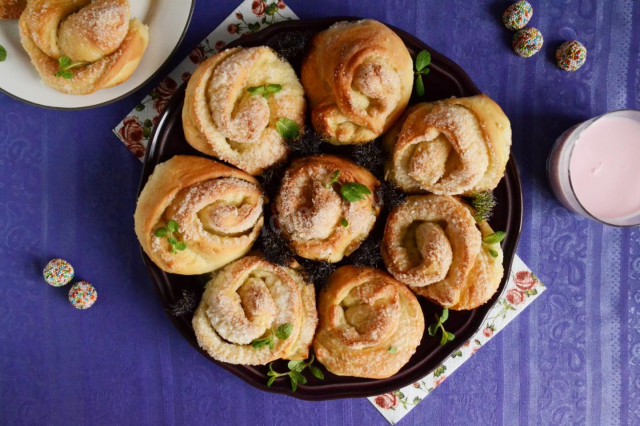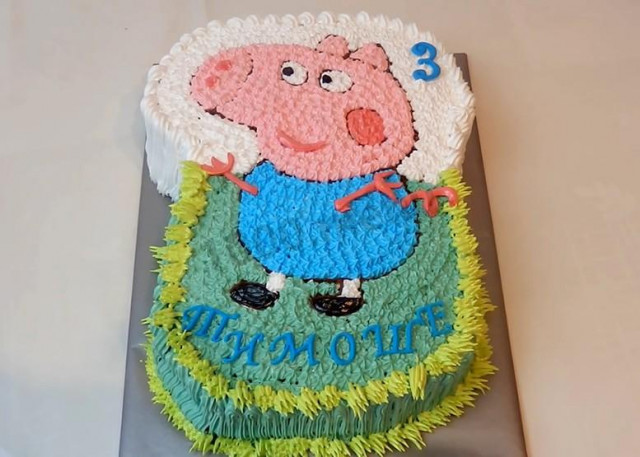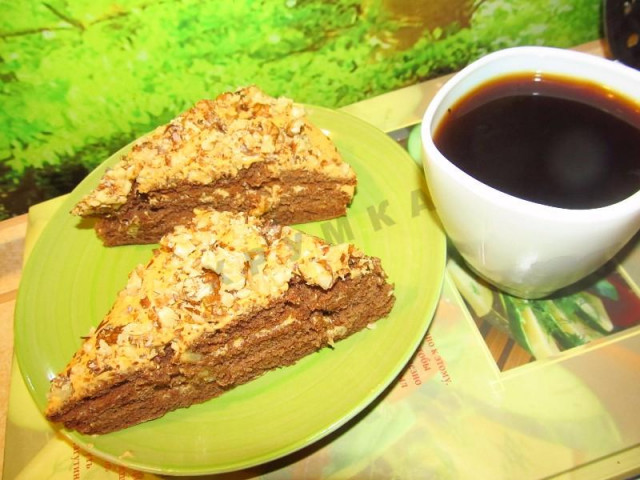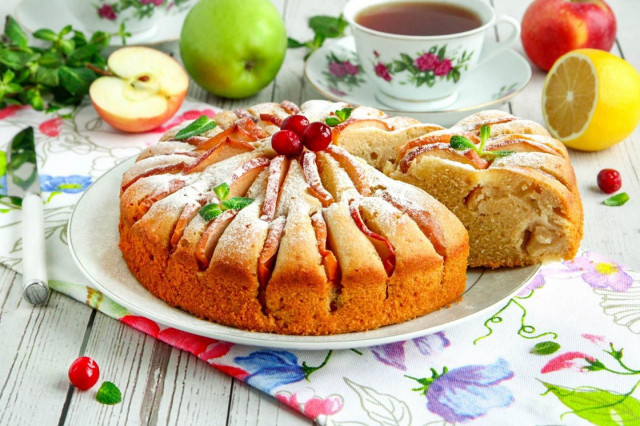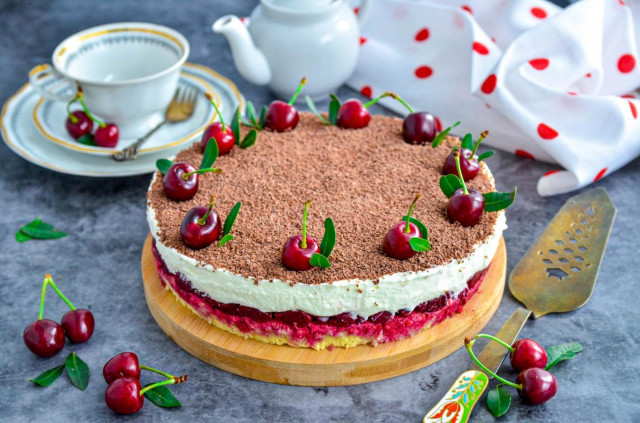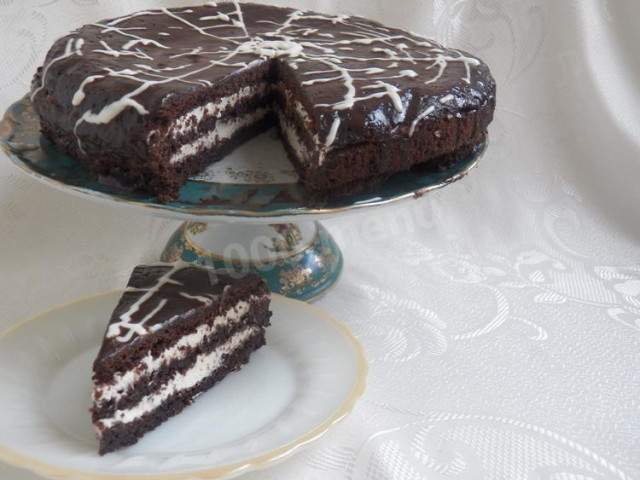Composition / ingredients
Step-by-step cooking
Step 1:
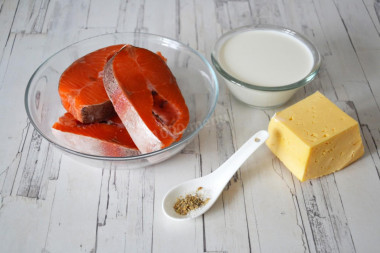
Prepare the ingredients. To cook red fish with cream, we will need: red fish; cheese; cream; ground black pepper and salt.
Step 2:
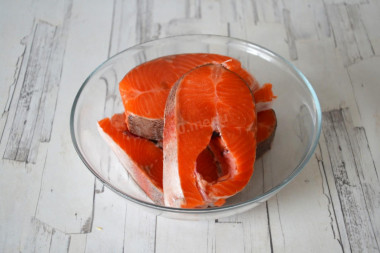
Wash the red, dry and cut into portioned steaks.
Step 3:
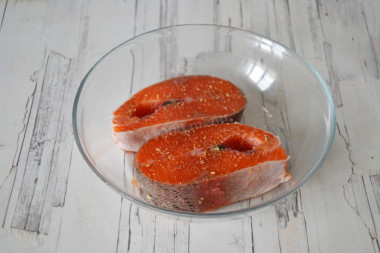
Salt and pepper the fish and put it in a frying pan.
Step 4:
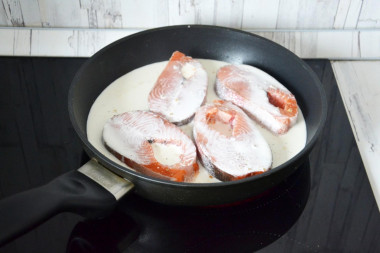
Pour the cream into the pan. Put it on a slow fire. Simmer for about 10 minutes.
Step 5:
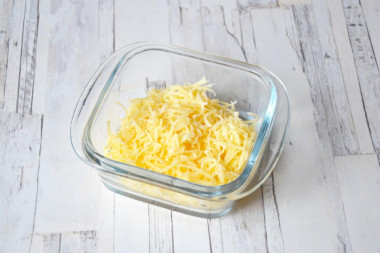
Grate the cheese on a medium grater.
Step 6:
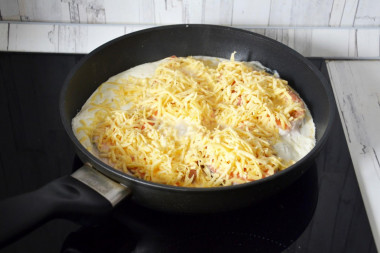
Generously sprinkle the fish with cheese.
Step 7:
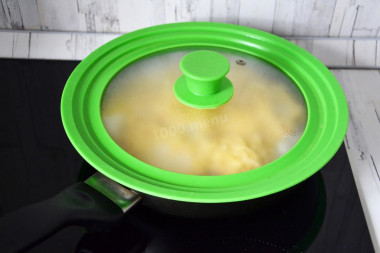
Cover the pan with a lid and simmer the fish in cream for about 5 minutes until the cheese is completely melted.
Step 8:
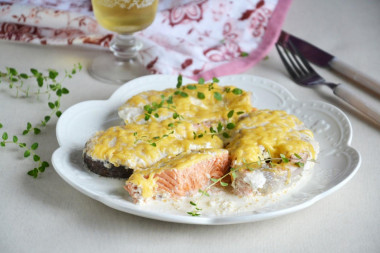
Serve the fish hot. Bon appetit!
Red fish has long been considered a real delicacy, so it could be seen exclusively on the festive tables of our citizens. The fish got its name (generalized) because of its excellent taste qualities, as well as due to the fact that the meat of this fish differs in red (pink) color.
Red fish is a whole family of valuable fish species, the meat of which is used by chefs around the world to prepare quite tasty, restaurant dishes.
Studies have shown that people who eat red fish are less likely to suffer from hypertension. Fish helps the brain work, strengthens tissues, gives elasticity to blood vessels, supports muscles in tone, restores damaged hair and nails. Red fish contains many useful substances: phosphorus, zinc, potassium. Scientists have found that with abundant consumption of red fish, protection from sun exposure is produced. In the strong sun, a person who eats red fish will reduce the risk of burns. Red fish improves endurance, fights arrhythmia, helps strengthen memory and concentration, prevents rickets, diabetes mellitus. Consideration of different types of red fish will help in its selection and indicate useful properties.
Salmon contains more omega-3 fats than other types of red fish. Fish oil is well absorbed by the body. It is useful for weight loss, helps with kidney disease, impaired coordination of movements, reduces cholesterol levels in the blood. It has a calming, relaxing effect.
Salmon is useful for the body with the following properties: normalizes blood circulation, improves metabolism, immunity, strengthens the nervous system, thyroid gland. Trout is inferior to salmon in terms of calories, suitable for a diet.
Trout is rich in fatty acids that protect blood vessels and have a beneficial effect on heart function. Trout contains vitamins of groups A, E, B, D. This fish contains a large amount of phosphorus useful for bones and muscles. This fish is used as a delicacy.
Important! An incorrectly selected frying pan can ruin even the best recipe. Read all the details on how to choose the perfect frying pan for different dishes here .
Note that the quality and taste of the finished dish largely depends on the proper defrosting of the ingredients. How to avoid mistakes and choose the best way, read the article about defrosting.
Any cheese is suitable for this dish — hard, semi-hard, soft, like mozzarella. The main thing is that it is tasty, high-quality, without milk fat substitutes and melts well.
Caloric content of the products possible in the composition of the dish
- Buttermilk - 36 kcal/100g
- Cream of 20% fat content - 300 kcal/100g
- Cream of 10% fat content - 120 kcal/100g
- Cream - 300 kcal/100g
- Dutch cheese - 352 kcal/100g
- Swiss cheese - 335 kcal/100g
- Cheese "Russian" - 366 kcal/100g
- Kostroma cheese - 345 kcal/100g
- Yaroslavsky cheese - 361 kcal/100g
- Altai cheese 50% fat content - 356 kcal/100g
- Soviet cheese - 400 kcal/100g
- Cheese "steppe" - 362 kcal/100g
- Uglichsky cheese - 347 kcal/100g
- Poshekhonsky cheese - 350 kcal/100g
- Lambert cheese - 377 kcal/100g
- Appnzeller cheese with 50% fat content - 400 kcal/100g
- Chester cheese with 50% fat content - 363 kcal/100g
- Edamer cheese with 40% fat content - 340 kcal/100g
- Cheese with mushrooms of 50% fat content - 395 kcal/100g
- Emmental cheese with 45% fat content - 420 kcal/100g
- Gouda cheese with 45% fat content - 356 kcal/100g
- Aiadeus cheese - 364 kcal/100g
- Dom blanc cheese (semi-hard) - 360 kcal/100g
- Lo spalmino cheese - 61 kcal/100g
- Cheese "etorki" (sheep, hard) - 401 kcal/100g
- White cheese - 100 kcal/100g
- Fat yellow cheese - 260 kcal/100g
- Altai cheese - 355 kcal/100g
- Kaunas cheese - 355 kcal/100g
- Latvian cheese - 316 kcal/100g
- Limburger cheese - 327 kcal/100g
- Lithuanian cheese - 250 kcal/100g
- Lake cheese - 350 kcal/100g
- Gruyere cheese - 396 kcal/100g
- Ground black pepper - 255 kcal/100g
- Salt - 0 kcal/100g
- Red Fish - 191 kcal/100g


